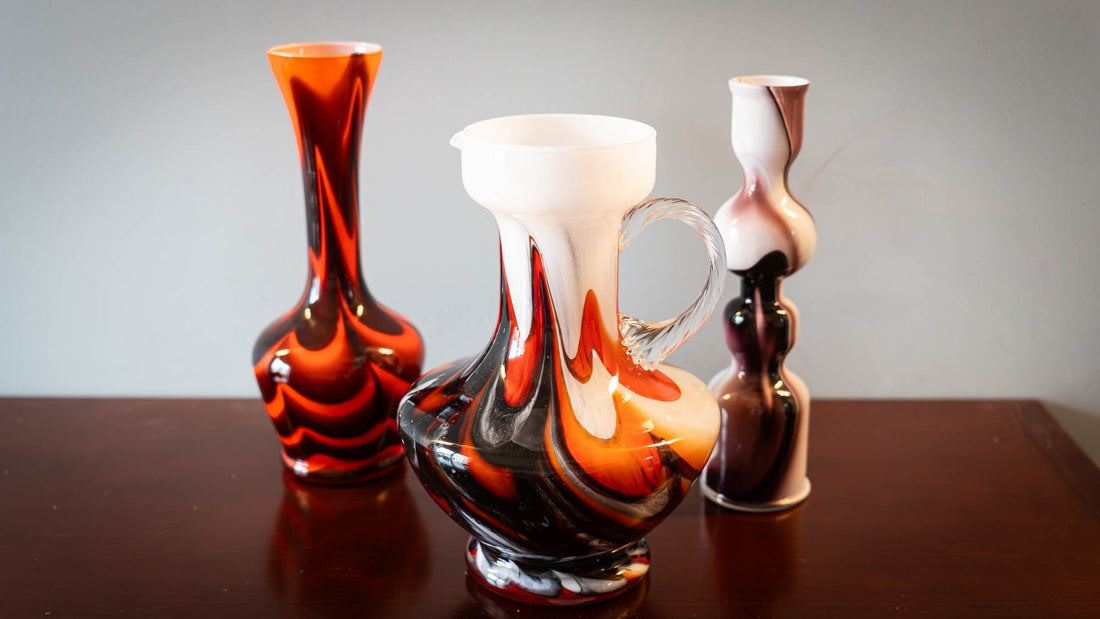
Carlo Moretti & the Art of Mid-Century Murano Glass
Carlo Moretti is synonymous with elegance, craftsmanship, and modernity in Murano glass design. Established in 1958 on the storied island of Murano, Italy, by brothers Carlo and Giovanni Moretti, the brand has become a beacon of innovation while honouring centuries-old Venetian glassmaking traditions.
Discovering Murano’s Magic
I vividly remember my first trip to Venice after the world began reopening following the long months of lockdown. The canals shimmered in the morning light, and a soft breeze carried the promise of discovery. Murano, just a short vaporetto ride away, felt like stepping into a living museum. Visiting its famed glass workshops was a dream come true for someone like me—someone captivated by the stories behind each carefully crafted piece.
A Vision Takes Shape
The Moretti brothers envisioned a glass company that would transcend the classic Murano styles of ornate, baroque-inspired glass. Carlo Moretti, with a background in design, wanted to merge modernist aesthetics with Murano’s artisanal heritage. His approach was radical: embracing minimalism, clean lines, and bold colours—a stark contrast to the elaborate glassworks for which Murano was known.
Design Philosophy and Inspirations
Carlo Moretti’s work reflects modernist design principles of simplicity, functionality, and artistic expression. Influenced by Italy’s post-war design movement, Moretti’s glass vases, tumblers, and decorative objects embrace geometric forms and striking colour contrasts. The interplay of opaque and transparent glass, combined with precise forms, creates visually dynamic objects.
Key collections like Minimax and I Piccoli exemplify this style, featuring bold, playful designs that are both decorative and utilitarian. His use of intense, saturated colours, often juxtaposed with clear crystal bases, gives each piece its signature appearance.
Craftsmanship and the Process

Watching the artisans at work in Murano was a humbling experience. Each Carlo Moretti creation starts as molten glass, shaped and refined by skilled hands using age-old techniques. What sets Moretti apart is the meticulous attention to detail, from hand-blowing to the precise application of coloured glass layers.
Once shaped, the pieces undergo a slow cooling process to ensure structural integrity. Then comes the finishing phase—sanding, polishing, and engraving. Every item is individually numbered, signed, and accompanied by a certificate of authenticity, cementing its place as a unique collector’s piece.
Design Legacy and Recognition
Carlo Moretti’s work has earned a permanent place in the world of design and art. His pieces are showcased in prestigious museums like the Victoria and Albert Museum in London and the Museum of Modern Art in New York. The brand's creations are celebrated for balancing artistic experimentation with timeless elegance.
Even after Carlo Moretti’s passing in 2008, the company continues to uphold his visionary ideals. Collectors and design enthusiasts worldwide seek out Moretti glass for its unparalleled craftsmanship, innovative design, and historical significance.
Collecting Carlo Moretti

As someone passionate about vintage design, I find Carlo Moretti’s creations irresistible. His vintage vases, tumblers, and art objects from the 1960s and 1970s are especially coveted due to their limited production and enduring appeal. The brand's legacy ensures that its pieces remain highly sought after in the world of luxury décor and fine art.
A Living Tradition
Carlo Moretti’s legacy endures as one of Murano’s last independent artisan glassmakers. While embracing contemporary design trends, the brand continues to respect its roots, preserving Murano’s artisanal glass-blowing traditions.
Whether displayed as statement pieces or used as functional art, Carlo Moretti’s creations embody a perfect fusion of heritage and modernity—making them timeless symbols of Italian design mastery.
I still cherish the memory of seeing those glowing furnaces and witnessing true craftsmanship in action. It deepened my appreciation for every unique piece I’ve come across since—a testament to a legacy that continues to inspire and enchant.
